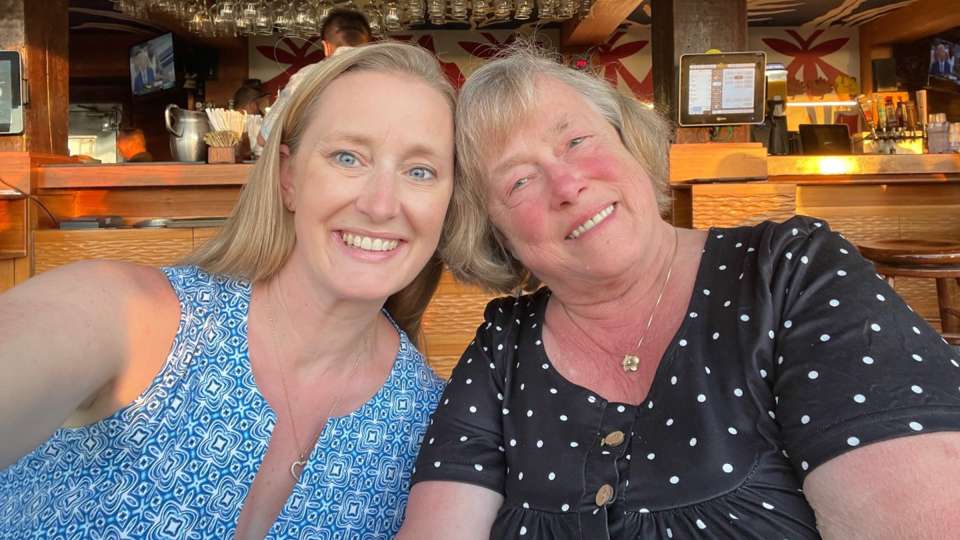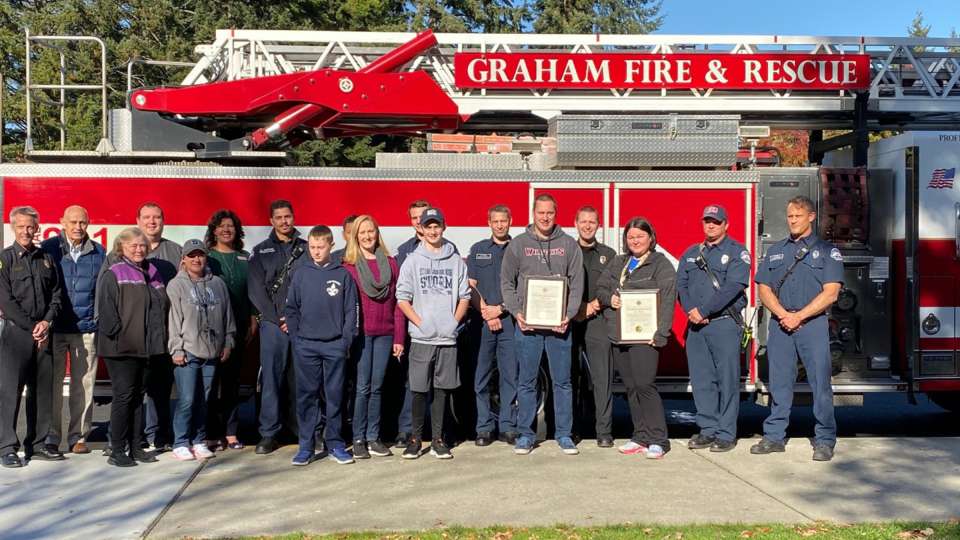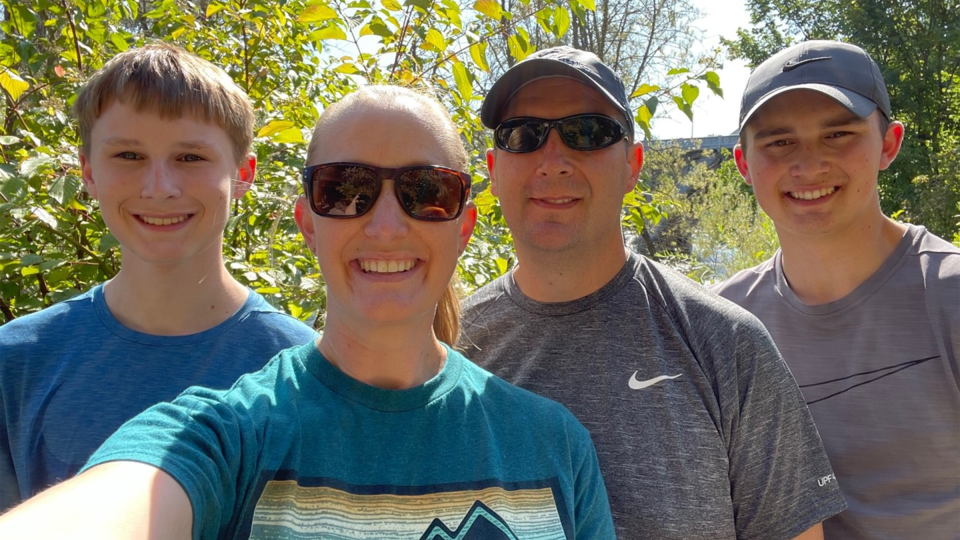
At 22, Christiann Thomas went to her doctor thinking she was having an allergic reaction and instead discovered she had hypertrophic cardiomyopathy, a disease that leads to the thickening of the heart muscle and can cause abnormal heart rhythms, stroke and cardiac arrest (when the heart suddenly stops beating). Within three years, four of her family members were also diagnosed. After multiple surgeries, two pregnancies and coping with life-threatening irregular heart rhythms, Christiann is now a part of a clinical trial and feels the best she has in years. This is her story, as told to Emily Boynton.
Growing up I was pretty active. We were a soccer family, so I loved playing soccer.
I’m the youngest of three siblings. My brother is a national championship runner and was a state championship soccer player; my sister played soccer in Europe. I played soccer but noticed I struggled catching my breath a little bit more than everybody else.
In high school, I was a cheerleader, played soccer and ran track, but I started having heart palpitations. When I went to my family practice doctor, I was told I had a heart murmur but that a lot of people have them, so don’t worry about it; go and do your thing.
In my sophomore year, I ended up passing out during one of my soccer practices. That was the scariest thing. I remember that so well; it’s the first time I passed out. That instance was the one where I thought, things aren’t right.
I was diagnosed with a mitral-prolapsed valve. My doctor said, “You just have a leaky valve, don’t worry about it. You’ll be fine.”
When you’ve been told you’re fine, it’s no big deal, you push. So, I pushed. I tried to work out extra and do things that would increase my stamina.
But then I blacked out at a track meet. I was running the 400, and when I hit the straightaway things went completely black. I couldn’t see anything. I know I crossed the finish line; I have no clue how I crossed the finish line.
I tore my hamstring during my junior year in high school. Looking back, I think that probably saved my life because it made me slow down.
A life changing — and saving — discovery
After I graduated college, I had severe chest pain, to the point where I would get home from work and just want to crawl in bed.
I thought I was having an allergic reaction to one of my newer medications, so I went to my new family practice doctor. She ran an EKG on me, and I remember her face when she said, “Christiann, this isn’t right. You got to get in to see a specialist and you got to get in now.”
I was sent to a cardiologist in Tacoma. At 22 you go into your cardiac office, and you look around the office and everyone’s in their 80s. I remember thinking, “What am I doing here?”
In 2002, the doctor diagnosed me correctly with hypertrophic cardiomyopathy and implanted my first defibrillator, a device that sends electric shocks to restore a normal heartbeat if your heart stops or you have irregular heart rhythms.
He said, “Christiann, I don’t know if you’re going to die tomorrow or a month from now, but you need to have a defibrillator put in.”
I was devastated. I was newly married, in my early twenties and ready to start my life. Instead, I was talking about a life-threatening condition.
A genetic link
When I was going through my diagnosis in my early 20s, my teenage cousin was also struggling. He ended up going into cardiac arrest in high school. He was airlifted to Seattle Children’s and diagnosed there with hypertrophic cardiomyopathy.
My aunt was evaluated at UW Medical Center and diagnosed with the same disease shortly thereafter. One in 500 people are born with a gene mutation that can cause the disease. My aunt did the genetic testing study and tested positive for the TPM1 gene mutation that is consistent with the genetic form of hypertrophic cardiomyopathy.
Within approximately three years, five members of my family were diagnosed and had defibrillators implanted. This experience has really bonded us together.
My aunt had wonderful treatment and encouraged me to get some help as I was still having problems with chest pain and palpitations. So, I transferred to UW Medical Center, my cousin went there and then my mom, who was also having problems with her heart, followed.
I remember being in my first appointment with Dr. Jeanne Poole and leaving thinking, “I can still live a full life.” Dr. April Stempien-Otero, too — she’s amazing. I had two extremely strong women surrounding me giving me advice on what it was going to be like and at the same time giving me my life back and putting me in charge instead of the condition driving things.
Bumps along the way
When I wanted to have children, no OB-GYNs would take me. I was too high of a risk for them and too much of a liability.
After talking with my cardiologists, I went to Dr. Easterling at UW Medicine and he accepted me as an at-risk cardiac patient. He worked closely with my cardiac team and helped me deliver my two wonderful boys, Justin and Jason.
I needed to know if my boys had the gene before they hit puberty — before the condition really presented itself. In 2012, they were enrolled in the genetic testing study, and we discovered the boys were both positive for having the TPM1 gene mutation. I cried harder than I have my entire life and was terrified for them.
My older son went into cardiac arrest at school in 2019. His math teacher, the school nurse and a paraeducator who is a friend of the family saved his life. They did CPR on him and used the school’s defibrillator until the paramedics arrived.
That was definitely the worst day of my life and the best day of my life all wrapped into one. I owe the teacher and nurse so much for saving my son.
He is a Boy Scout now and is working on his Eagle project. He found out a school in our area doesn’t have a defibrillator, so he’s fundraising for defibrillators and making that a passion of his own after his story.
Finding hope in a clinical trial
I went into ventricular fibrillation, a life-threatening heart rhythm, while teaching in 2017. I was admitted to UW Medical Center for five days with medication changes.
After I was discharged, life was very difficult. I remember feeling like I had lost control. My mind was fuzzy; I couldn’t concentrate; driving was out of the question; my heart was very irregular. It was a very scary time and my doctors started to talk about the possibility of needing a heart transplant.
A miracle from UW Medicine came when I got this letter in the mail that I qualified for a clinical trial with Dr. David Owens that was testing the medication mavacamten to treat hypertrophic cardiomyopathy.
I joined the clinical trial in March 2018. It has really given me my life back. A heart transplant is no longer needed, my symptoms have significantly decreased, and I feel like I am able to exercise more.
I don’t know the last time I’ve felt this well.
Creating a life for myself
This condition is a rollercoaster. There are good days and there are bad days. We just hope that the good days outnumber the bad.
I look at that pre-UW Medicine time versus where I am now, and everything before was either not getting me to the right place and getting the answers I needed, or it was about not being able to do things with my life. It taught me I need to advocate for myself. As a person, as a woman, I need to be heard by my doctors and I need to advocate for having a fulfilling life.
I want people to know that they need to be their own advocate and if things are not right you’ve got to speak up and get help.
UW Medicine is at the forefront of research. So that’s where I want to go, and I want to get good care.
I want to feel like I’m living rather than give up so much of my life. I have my condition, but it doesn’t define who I am. I need to make sure that I still live a fulfilling life.

 Healthy ideas for your inbox
Healthy ideas for your inbox







